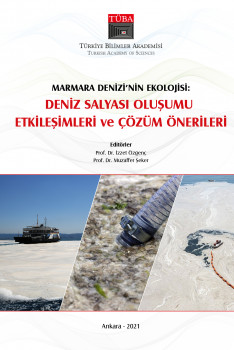Tears of Marmara: Sea Mucilage

Tears of Marmara: Sea Mucilage
The mucilage (sea saliva) disaster, which affected all parts of the Marmara Sea in May and June 2021, has reached such dimensions that it will seriously threaten the ecosystem, sea creatures and biodiversity due to insufficient wastewater treatment, intense industrial activities in the region, and global climate change. As of 2021, the mucilage problem in the Marmara Sea is increasing due to environmental pressures such as stagnant weather conditions, rising temperatures, and highly variable nutrient (nitrogen and phosphorus) ratios in the sea content. The gelatinous and colloidal exopolymers (high molecular weight polysaccharides), which are secreted into the aquatic environment by some phytoplankton species (e.g. Gonyaulax fragilis, etc.) known to produce sea saliva due to numerous stress factors arising from external factors, constitute the biological causes of mucilage formation. Mucilage can cover the sea surface like a blanket along hundreds of kilometers of coastline and inhibit the oxygen transfer, causing mass death of living organisms, fish eggs, and their larvae. In addition, mucilage, which can host pathogenic bacteria (such as coliform ve Escherichia coli (E. coli)) and viruses that threaten marine flora and fauna, causes clogging of the gills of sea creatures and therefore negatively affects fisheries and tourism. In this study, the causes and negative aspects of the mucilage (sea saliva) problem threatening the Marmara Sea were examined and the activities that should be implemented in the immediate, medium and long term for the solution of this important environmental problem were presented.
